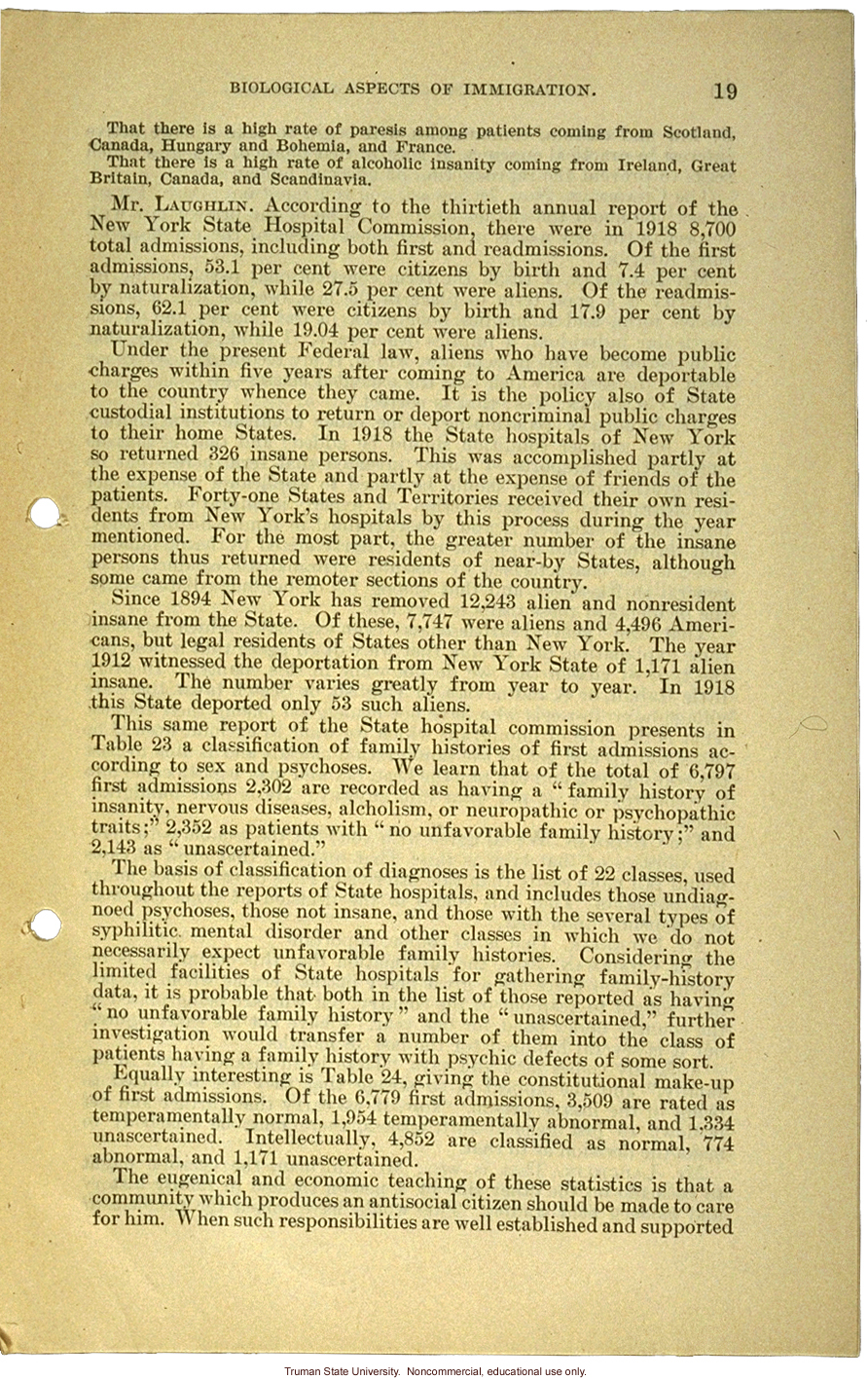Biological Aspects of Immgration 19
That there is a high rate of paresis coming from Scotland, Canada, Hungary and Bohemia, and France.
That there is a high rate of alcoholic insanity coming from Ireland, Great Britain, Canada, and Scandinavia.
Mr. Laughlin. According to the thirtieth annual report of the New York State Hospital Commission, there were in 1918 8,700 total admissions, including both first and readmissions. Of the first admissions, 53.1 per cent were citizens by birth and 7.4 per cent by naturalization, while 27.5 per cent were aliens. Of the readmissions, 62.1 per cent were citizens by birth and 17.9 per cent by naturalization, while 19.04 per cent were aliens.
Under the present Federal law, aliens who have become public charges within five years after coming to America are deportable to the country whence they came. It is the policy also of the State custodial institutions to return or deport noncriminal public charges to their home States. In 1918 the State hospitals of New York so returned 326 insane persons. This was accomplished partly at the expense of the State and partly at the expense of friends of the patients. Forty-one States and Territories received their own residents from New York's hospitals by this process during the year mentioned. For the most part, the greater number of the insane persons thus returned were residents of the near-by States, although some came from the remoter sections of the country.
Since 1894 New York has removed 12,243 alien and nonresident insane from the State. Of these, 7,747 were aliens and 4,496 Americans, but legal residents of States other than New York. The year 1912 witnessed the deportation from New York State of 1,171 alien insane. The number varies greatly from year to year. In 1918 this state deported only 53 such aliens.
This same report of the State hospital commission presents in Table 23 a classification of family histories of first admissions according to sex and psychoses. We learn that of the total of 6,797 first admissions 2,302 are recorded as having a "family history of insanity, nervous diseases, alcoholism, or neuropathic or psychopathic traits;" 2,352 as patients with "no unfavorable family history;" and 2,143 as "unascertained."
The basis of classification of diagnoses is the list of 22 classes, used throughout the reports of State hospitals, and includes those undiagnosed psychoses, those not insane, and those with the several types of syphilitic mental disorder and other classes in which we do not necessarily expect unfavorable family histories. Considering the limited facilities of State hospitals for gathering family-history data, it is probable that both in the list of those reported as having "no unfavorable history" and the "unascertained" further investigation would transfer a number of them into the class of patients having a family history with psychic defects of some sort.
Equally interesting is Table 24, giving the constitutional make-up of first admissions. Of the 6,779 first admissions, 3,509 are rated as temperamentally normal, 1.954 temperamentally abnormal, and 1,354 unascertained. Intellectually, 4,852 are classified as normal, 774 abnormal, and 1,171 unascertained.
The eugenical and economic teaching of these statistics is that a community which produces an antisocial citizen should be made to care for him. When such responsibilities are well established and supported


